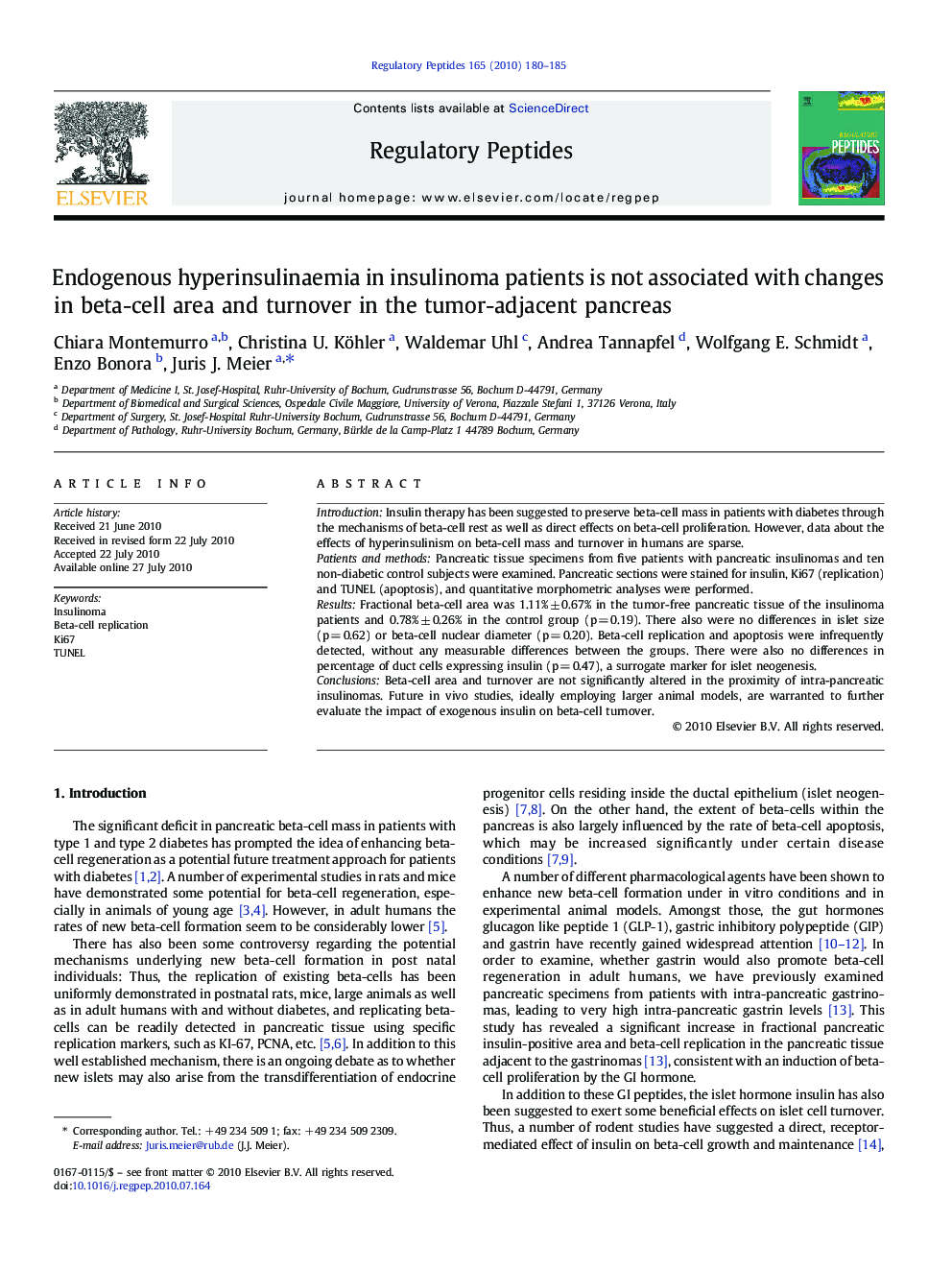| Article ID | Journal | Published Year | Pages | File Type |
|---|---|---|---|---|
| 2022674 | Regulatory Peptides | 2010 | 6 Pages |
IntroductionInsulin therapy has been suggested to preserve beta-cell mass in patients with diabetes through the mechanisms of beta-cell rest as well as direct effects on beta-cell proliferation. However, data about the effects of hyperinsulinism on beta-cell mass and turnover in humans are sparse.Patients and methodsPancreatic tissue specimens from five patients with pancreatic insulinomas and ten non-diabetic control subjects were examined. Pancreatic sections were stained for insulin, Ki67 (replication) and TUNEL (apoptosis), and quantitative morphometric analyses were performed.ResultsFractional beta-cell area was 1.11% ± 0.67% in the tumor-free pancreatic tissue of the insulinoma patients and 0.78% ± 0.26% in the control group (p = 0.19). There also were no differences in islet size (p = 0.62) or beta-cell nuclear diameter (p = 0.20). Beta-cell replication and apoptosis were infrequently detected, without any measurable differences between the groups. There were also no differences in percentage of duct cells expressing insulin (p = 0.47), a surrogate marker for islet neogenesis.ConclusionsBeta-cell area and turnover are not significantly altered in the proximity of intra-pancreatic insulinomas. Future in vivo studies, ideally employing larger animal models, are warranted to further evaluate the impact of exogenous insulin on beta-cell turnover.
Research highlightsBeta-cell regeneration is an area under investigation for the treatment of diabetes. The tumor-free pancreatic tissue of insulinoma patients does not exhibit significant abnormalities in beta-cell area. The present study suggests that high circulating insulin levels have no significant impact on beta-cell mass and turnover.
